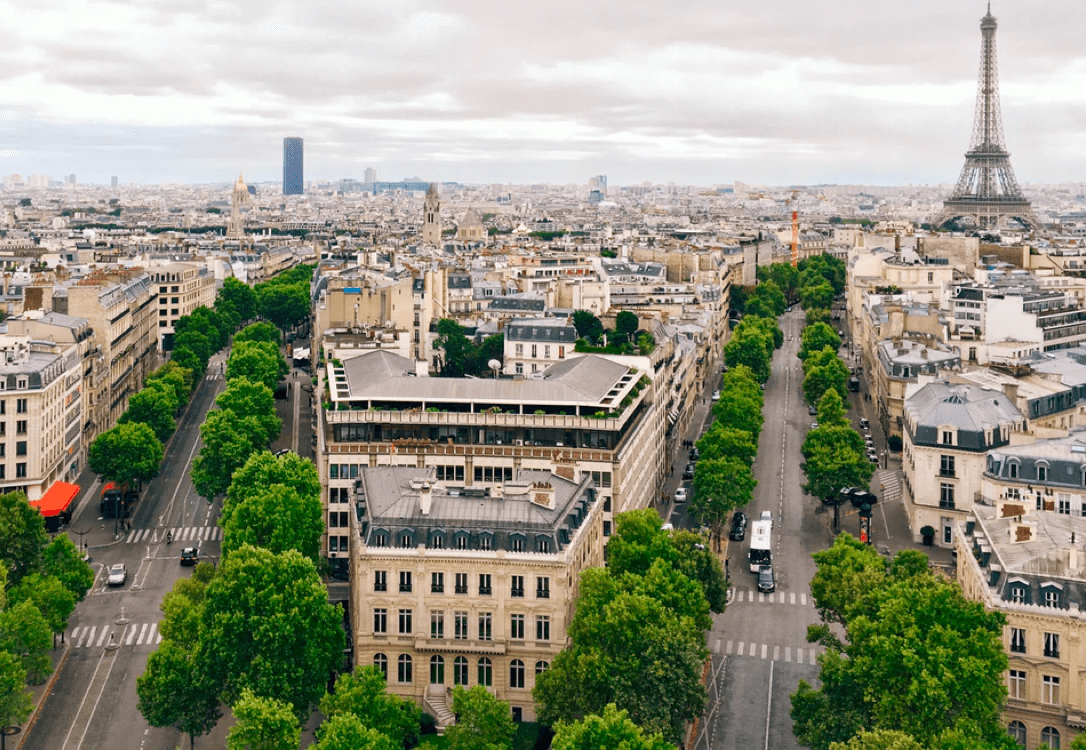- Your cart is empty
- Continue Shopping
Parades of
Samba Schools
RIO CARNIVAL 2024
Rio de Janeiro Samba School Parades
The Carnival Parade
The samba school parade is something everyone should watch at least once in their lives. The event is broadcast live to several countries. Watching on TV is comfortable, but it doesn't come close to the thrill of being there. Definitely, mingling with the crowd and watching Brazilians and Cariocas (the people of Rio) is much more interesting. For a better and more complete experience, you can even parade with a samba school.
The Rio Samba Schools Parade is very different from all the other street parades held in some other places in the world. It started as a street party with groups of blocks. The Carnival parades in Rio developed and became something special: a competition between samba schools. The main competition was initially held in the city center. Until the mid-1980s, spectator stands were simply assembled and dismantled each year on the Avenue. Presidente Vargas, one of the main arteries of Rio de Janeiro. Then, the main parade was transferred to the Sambadrome, built especially for this event. Preparation for the Samba parade begins months in advance, each samba school mobilizes thousands of members, generally from the school's host community, creating sectors and wings making up the school. First of all, the plot of the year is chosen. Then the school's samba is selected through competition, which you can follow for a few months on the school courts, while the carnival worker creates the costumes and floats. When they are ready, the so-called prototypes go to the production line. In December, technical rehearsals begin. In mid-December, the plot sambas are recorded and then sold in stores.
Rio's samba school parade is not a street event where people move chaotically at will, but a highly orchestrated show of grand proportions. Each member has a specific role and parade location according to their fantasy in a special wing, of a special section of the samba school in which the parade is a member who will help tell the school's story on the avenue. Every year, each school chooses a different theme for the parade. It can be a celebration of a certain period in history, paying homage to a famous name or famous figures in Brazilian history. Being able to highlight a special event or talk about anything that can move the spirit and imagination; like a special animal, or one of the elements, water or fire, etc. The school has to illustrate the chosen theme throughout its work: The Sambas Enredos, which are specially written for the parade year, according to the theme. All the floats and the costumes of their 3,000 to 5,000 members are richly decorated, revealing to the public and the judges every detail created by the carnival worker.Each school's parade is very well designed and organized. They line up in a unique way to present their show. The schools are divided into several sections and each section has a number of wings of around 100 to 200 people wearing the same costume. You will find more details about the role and name of some special sections of the parade on the other side of this page. Between the wings, there are about eight floats, separating the sections. Most of them are pushed by men from the school community, but some are motorized. The floats can carry special guests, along with some members dressed in dazzling costumes.xThe costumes are extremely costumed, colorful, elaborate and detailed. They are truly original, designed and made from scratch every year. They have mirrors, feathers, metallic fabrics, silk and sometimes jewelry or coins. These costumes take months to make. Work begins approximately 8 months in advance. Each samba school has its own distinct colors (the colors of its flag) and costume style. The array of colors is reflected in many parts of his show. The most elaborate and larger costumes are worn by the main highlights. They are members of the school chosen with honor to wear these special costumes. Even though total nudity is not officially allowed, sometimes the floats feature top-less or nearly naked beauties, men and women, wearing only body paint, lots of glitter and a smile. You can think of the event as a grand opera or rather several operas as they take place in one night. It is beautiful to see and the memory of this spectacle will leave an impression on you for a lifetime.

How the parade is judged
The Samba Schools Parade is a glorious competition in which points are awarded by judges. Just like in sports, which offer entertainment while having strict rules. Schools are judged in 10 categories. There are four judges from each category. Each judge gives their score on a scale of 7-10 (with fractions), with 10 being the best. The points are counted and announced on Ash Wednesday, right after Carnival. During the parades, the judges are spread out along the samba catwalk and are in booths clearly marked with the word “judgedores” and the names of the questions.

The 10 categories in which samba schools are judged
*Battery
*Samba Plot
*Harmony
*Evolution
*Plot
*Set
*Allegories and Props
*Costumes
*Front commission
*Master Room and Flag Holder
Drums
The percussion must maintain the rhythm throughout the parade. All school members must be singing and dancing to the rhythm established by the group. The four judges are judging the regularity and continuity of the beat, a precise and constant firm beat from the floor toms, and an overall effective and balanced sound from all instruments. The rhythm must be varied and diverse, but it must be maintained perfectly, especially when the instruments restart after a stop. Time must be maintained at all times. The group's versatility is vital. The use of wind instruments is prohibited.
Samba plot
It should contain the essence of the central theme that the school presents through its parade that year. The lyrics must adapt to the music, since samba is also judged by its artistic qualities. This is the only category in which the judges subdivide their scores, giving some points for the lyrics and some for the melody.
Evolution
Coherence and compatibility are assessed on the participants' movements and the dance with the rhythm. The parade must maintain a constant flow, being spontaneous and creative at the same time, expressing the passion, agility and vigor of the participants. Penalty points are applied if the school opens gaps between marchers, or between wings.
Set
This question is judged freely, without much technical criteria, where the general impact of the school parade is considered. It is the most subjective category and, as such, generates many controversies.
Costumes
The creativity of the costumes, the originality, a total "good taste" and their color sets are evaluated in this category. Judges evaluate costumes individually and together. Diversity is important as much as the suitability of costumes for the plot they represent. Its construction and state of conservation and the entire finish or lack thereof are assessed, there can be nothing falling apart. Most costumes are considered in this category, including all commercial wings, passistas, drums and Bahians.
Harmony
In this regard, the musical, acoustic and visual harmony of the school parade is judged. For a high score in this category, the music, rhythm and singing must match perfectly with the choreography and dance of the School's members. The school may lose points due to a lack of members who sing the samba correctly.
Plot
This is the school's central theme that was chosen and must be represented by all parties during its parade. It is a literary artistic creation. Judges consider, among other factors, the strength of the idea as a whole and its development through various wings and floats. It should be possible to easily understand the theme and central idea behind the show. The theme may also have some foreign references. Penalty points are made, however, without any form of advertising being involved.
Allegories and Props
This item evaluates the visual expression of the theme, the originality and quality of the artistic work, such as the movements, colors and visual effects involved. Judges evaluate the floats and all the props being used in the parade. Judges consider how effective floats and props are in displaying the plot and how their design supports theme ideas. The highlights' costumes (the most luxurious costumes on top of the floats and in the rest of the parade) are also evaluated in this category.
Front commission
In this category, all aspects are considered from the wing that opens the samba school parade. The judges consider the choreography, costumes and how it achieves the main purpose, which is to introduce the school to the public. Currently where one of the main parts of the show is concentrated.
Master Room and Flag Bearer
The master room and his flag bearer are extremely important elements in the school. The judges evaluate the dance, elegance, grace and agility, flexibility and variety of movements, and judge the symbolic protection of the Flag. Coordination between the two as a couple is also important.

Smile and enjoy Paris. take a long walk around and talk to people.
Lorem ipsum dolor sit amet, consectetur adipiscing elit. Maecenas sed odio eget tellus facilis cursus. Integer efficitur volutpat nisl, quis tristique tellus tincidunt Interdum ellt male suada fames ac ante ipsum primis invel ornare dui tristiq.

